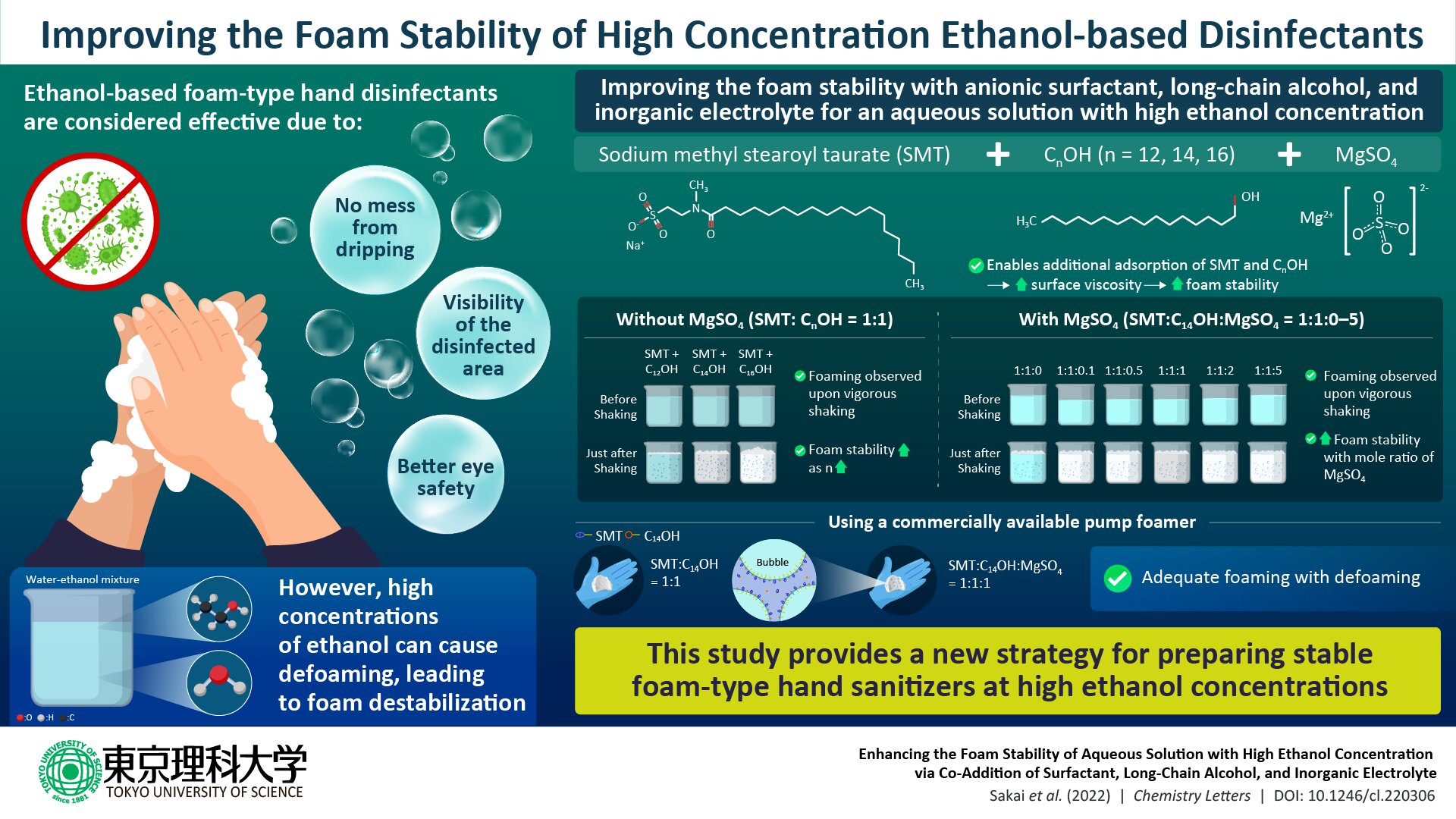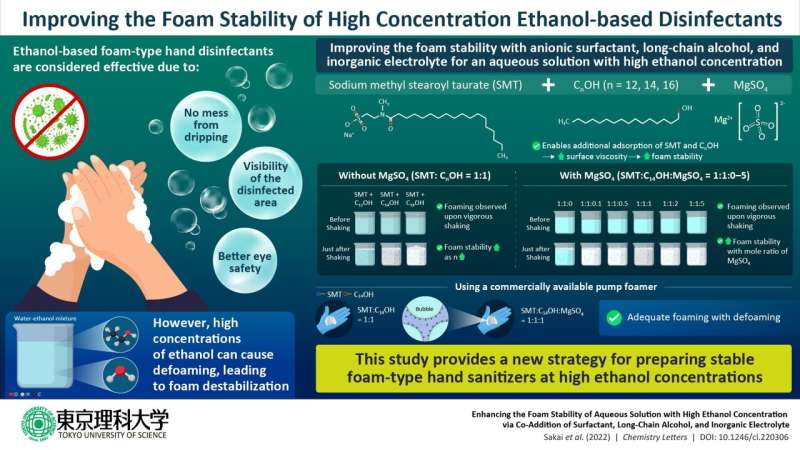

Since the outbreak of COVID-19, the importance of wearing masks and disinfection of items has become paramount. As a result, there is now a greater need for effective, potent, and simple-to-apply disinfectants. Foam-type disinfectants are a leading candidate in this regard since they do not drip, keep the disinfected area visible, and are less likely to reach the user’s eyes.
However, foam-type disinfectants are not without issues. While the foam is usually stabilized with the adsorption of a surfactant at the air/liquid interface, adding high concentration of ethanol, an antiseptic, to foams in aqueous solutions causes defoaming resulting from destabilization of the foam.
To improve the stability of foam disinfectants at high ethanol concentrations, a group of researchers from Tokyo University of Science (TUS), Japan, in collaboration with the Life Science Products Division, NOF Corporation, have now come up with a new proposal. This study, led by Associate Professor Kenichi Sakai of TUS, was published in Chemistry Letters.
In their study, the team added an anionic (negatively charged) surfactant, long-chain alcohols, and an inorganic electrolyte to an aqueous solution containing 60% ethanol by volume. They used sodium methyl stearoyl taurate (SMT) as the surfactant, CnOH (where n = 12, 14, 16) as the alcohols, and magnesium sulfate (MgSO4) as the electrolyte.
The inorganic electrolyte provided two main advantages: firstly, it enabled effective screening of the electrostatic repulsion between the SMT headgroup adsorbed at the air-liquid interface. Secondly, it promoted interactions between Mg2+ ions and the headgroups. These, in turn, facilitated the additional adsorption of SMT and CnOH, increasing the surface viscosity and foam stability.
“We have been working on this research project before the novel coronavirus infection became a social problem. We believe that the social impact of this research will only increase as the social need for disinfectants and health safety go up,” says Dr. Sakai, explaining his motivation behind the study.
The team observed that, in the absence of the MgSO4, foaming occurred upon shaking for CnOH (n = 12, 14, 16) with the foam stability increasing with increasing n. Additionally, the combination of SMT and CnOH resulted in a decrease in surface tension and an increase in surface viscosity, which increased foam stability.
When MgSO4 was added, foaming happened upon vigorous shaking. The foam stability increased with increase in the mole ratio of MgSO4, which decreased the surface tension while increasing the surface viscosity.
Finally, the team used a non-pressurized commercial pump to test the foam formation of the solution. They found that the SMT and C14OH mixture produced adequate foaming both with and without MgSO4. Further, defoaming occurred after 30 seconds for both cases, an appropriate time scale for the dissipation of the foam after application.
“The COVID-19 pandemic has seriously affected human lives and social activities on a global scale. As a result, the importance of proper sanitation has been recognized worldwide. We believe that the results of our research will contribute to the sustainable development goal (SDG3) of ensuring good health and well-being among people of all ages,” says Dr. Sakai.
Image: The foam-coarsening experiment aboard the ISS
Kenichi Sakai et al, Enhancing the Foam Stability of Aqueous Solution with High Ethanol Concentration via Co-Addition of Surfactant, Long-Chain Alcohol, and Inorganic Electrolyte, Chemistry Letters (2022). DOI: 10.1246/cl.220306
Tokyo University of Science
Citation:
Improving foam stability in disinfectants with high ethanol concentrations (2022, September 1)
retrieved 1 September 2022
from https://phys.org/news/2022-09-foam-stability-disinfectants-high-ethanol.html
This document is subject to copyright. Apart from any fair dealing for the purpose of private study or research, no
part may be reproduced without the written permission. The content is provided for information purposes only.